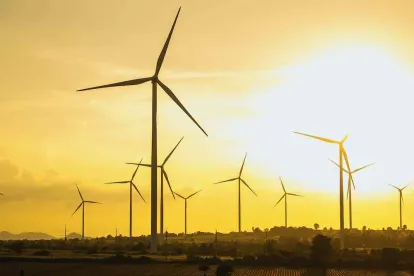In our previous alert, we provided an overview of the Internal Revenue Code (IRC) Sections 45 and 48. The United States IRC allows production or investment tax credits for taxpayers using wind to produce electricity or for placing wind energy property in service. The availability and amount of the production tax credit (PTC) or the investment tax credit (ITC) depends on when the taxpayer begins constructing a wind project. This outline summarizes the Internal Revenue Service’s (IRS) guidance on when a taxpayer begins construction of a wind project for the PTC and the ITC.
I. Beginning of Construction[i]
-
Physical Work Test
-
Construction begins when physical work of a “significant nature” begins.
-
Determining what work is of a significant nature is a facts and circumstances test.
-
-
The taxpayer must demonstrate a continuous program of construction, called the Continuous Construction Test.
-
Determining whether the taxpayer maintains a continuous program of construction is also a facts and circumstances test.
-
-
-
Five Percent Safe Harbor
-
Construction begins if:
-
The taxpayer pays or incurs 5% or more of the total cost of the facility; and
-
The taxpayer makes “continuous efforts” to advance toward completion of the facility, called the Continuous Efforts Test.
-
Whether a taxpayer makes continuous efforts to advance toward completion of the facility may include but are not limited to:
-
Paying or incurring additional amounts included in the total cost of the facility
-
Entering into binding written contracts for components or future work on construction of the facility
-
Obtaining necessary permits
-
Performing physical work of a significant nature
-
-
-
-
-
Continuity Safe Harbor
-
For facilities placed into service before January 1, 2016, such facility is deemed to satisfy the Continuous Construction Test (for the Physical Work Test) or the Continuous Efforts Test (for the purposes of satisfying the Five Percent Safe Harbor).[ii]
-
For facilities placed into service after January 1, 2016, whether the facility satisfies the Continuous Construction Test or the Continuous Efforts Test is a facts and circumstances test.
-
-
IRS Notice 2016-31 modifies the Continuity Safe Harbor
-
If a taxpayer places a facility into service by the later of (1) a calendar year that is no more than four calendar years after the calendar year that construction of the facility began or (2) December 31, 2016, the facility will be considered to satisfy the Continuity Safe Harbor.
-
-
IRS Notice 2017-04 extends (2) of IRS Notice 2016-31 to December 31, 2018.
-
IRS Notice 2018-59 establishes the beginning of construction, the Physical Work Test, the Five Percent Safe Harbor, the Continuous Construction Test, and the Continuous Efforts Test for the ITC, which mirrors the PTC.
-
Continuity Safe Harbor
-
If a taxpayer places an energy property into service by the end of a calendar year that is no more than four calendar years after the calendar year during which construction of the energy property began, the energy property will be considered to satisfy the Continuity Safe Harbor.
-
If a taxpayer does not place an energy property into service before the end of the fourth calendar year after the calendar year during which construction of the energy property began, the taxpayer must satisfy the relevant facts and circumstances test under either the Physical Work Test or the Five Percent Safe Harbor.
-
-
-
IRS Notice 2020-41, IRS COVID-19 Extensions for the PTC and ITC
-
IRS Notice 2020-41 extends the Continuity Safe Harbor for qualified facilities or energy properties that began construction in either calendar year 2016 or 2017 if the qualified facility or energy property is placed into service by the end of a calendar year that is no more than five calendar years after the calendar year when construction began.
-
-
Three-and-a-Half-Month Rule
-
Under the Five Percent Safe Harbor, a taxpayer may add as costs to the project payments for services or property if the taxpayer can reasonably expect the person to provide services or property within three-and-a-half months after the date of payment.[iii]
-
-
-
IRS Notice 2021-05 – Extension of Continuity Safe Harbor for Offshore Wind Facilities
-
IRS Notice 2021-05 extends the Continuity Safe Harbor for qualified facilities or energy properties that is an offshore project or federal land project if the qualified facility or energy property is placed into service by the end of a calendar year that is no more than 10 calendar years after the calendar year during which construction when construction began.
-
[i] See IRS Notice 2013–29.
[ii] See IRS Notice 2013–60.
[iii] See also IRC §461(h); Treas. Reg. §1.461-4(d)(2)(i); Treas. Reg. §1.461-4(d)(6)(ii).




 />i
/>i
